Many areas of rice and crops were flooded, many of which were completely lost and could not be recovered due to the impact of storm No. 3. Currently, the water level on the rivers is gradually receding, and farmers are returning to the fields to restore production.
Immediately after the flood receded, local farmers urgently went to the fields to take care of and prevent pests and diseases for the winter-spring rice crop.
Agricultural sector suffered damage of about 350 billion VND
40 hectares of rice belonging to Mr. Vu Tien Tham's family in Dong Xuan commune (Dong Hung) were at the stage of heading to flowering and were submerged by rain and flood. By September 15, the water level in the fields had decreased significantly, however, in Cua Chua field - a low-lying area of the commune, the water was still above the panicles. It is estimated that about 30% of the rice area was completely lost.
Mr. Tham shared: It has been many years since I witnessed such a big storm and flood. The natural disaster struck when the rice plants were in a sensitive stage. I knew there would be damage but I did not think it would be so severe. My family has 14 hectares of Cua Chua rice fields. Because it is located in a low-lying area, the water level on the main river is high, so for nearly a week the rice plants were submerged in water, and the rice ears showed signs of rotting. "While there is water, there is bailing", as soon as the weather is sunny, I spray pesticides to prevent stem borers, rice blast disease and some other harmful diseases as recommended.
After 7 days of being submerged in water, the 8-sao field of Mr. Vu Van Giang's family in Cua Chua field has been almost completely damaged, the rice leaves have turned yellow, and the ears are showing signs of rotting. Holding on to hope, Mr. Giang still went to buy pesticides to spray to prevent pests and diseases according to the recommendations of the professional agency. He said: This year's crop is really difficult for farmers, the more they plant, the greater the loss. At the beginning of the season, there was heavy rain, I had to replant this field 3 times, now the rice is about to bloom but it rains and is flooded. I try to take care of it, spray pesticides to prevent and control pests and diseases, and salvage whatever flowers I can.
From September 6 to 11, rainfall measured in Tien Hai district reached nearly 600mm in some places. Heavy rains and rising floodwaters, along with difficulties in drainage in the downstream district, caused thousands of hectares of rice to be flooded, of which about 1,000 hectares of rice were damaged by 70%.
In Quynh Phu, natural disasters also significantly affected agricultural production. Mr. Do Tien Cong, Head of the District's Department of Agriculture and Rural Development, said: It is estimated that the entire district has about 4,500 hectares of winter-spring rice with a yield loss of 20-30%, 500 hectares with a loss of over 50%. Summer-autumn crops were damaged on 1,500 hectares, of which 250 hectares of corn were completely lost. The district has issued documents directing and guiding people to overcome the consequences, at the same time, counting and reviewing the exact damaged area to propose support according to current regulations, helping people promptly restore production.
According to the report of the Office of the Provincial Steering Committee for Natural Disaster Prevention, Control and Search and Rescue, the whole province has about 11,000 hectares of winter-spring rice affected by storm No. 3. Thanks to good drainage work, the damaged area of over 30% has now decreased to about 6,000 hectares; 585 hectares of unharvested and newly planted vegetables are affected by 30-70%, 2,760 hectares are affected by over 70%; 1,215 hectares of fruit trees are affected by 30-70%, 170 hectares are affected by over 70%.
The total number of poultry and waterfowl killed was nearly 60,100, the total number of livestock killed was 146. Some livestock barns had their roofs blown off, walls collapsed, biogas tanks broken; some fish cages on the Red River in Hung Ha district were overturned and swept away (about 60 tons of catfish, carp, red tilapia, grass carp...). The estimated damage to the agricultural sector was about 350 billion VND.
The whole province has about 6,000 hectares of winter-spring rice with over 30% yield damage.
Pay attention to care, increase the area of short-term crops and winter crops
To minimize damage caused by storms and floods and promptly restore production, the agricultural sector has issued a document guiding people to restore production. In particular, it is necessary to mobilize maximum means to force pumping and quickly drain water when the tide is low, giving priority to quickly pumping and draining flooded areas in Kien Xuong and Tien Hai districts, Thai Binh city, and southern communes of Thai Thuy district, etc., thereby minimizing the phenomenon of ear scorching and grain smudging due to rice ears being submerged in water. For areas of rice that have flowered and fallen, it is necessary to prop up and tie them up to limit the rice ears from being submerged for a long time, leading to sprouting and rotting; check and prevent and control planthoppers and brown spot disease when they occur in the fields. For rice that has not flowered or has just flowered, and has crushed rice leaves, it is necessary to urgently spray to prevent leaf blight and bacterial streak disease, and not use growth stimulants or urea fertilizers. The late-flowering rice areas after September 15 in the northern districts and after September 20 in the southern districts must continue to prevent and control two-spotted stem borers, small leaf rollers, and rice blast disease when the rice is late-flowering. In areas flooded for a long time, the stems and leaves turn yellow, the panicles rot, the roots turn black and rotten, and cannot recover. As soon as the water recedes, it is necessary to clean the fields and proactively replace them with autumn-winter vegetables such as corn, peanuts, beans, melons, squash, etc. Dry land needs to be plowed and harrowed to create ventilation, and lime powder at a rate of 20-25 kg/sao should be sprinkled evenly on the field surface before planting to limit the growth of harmful fungi.
For vegetable crops, it is necessary to drain water urgently. After draining the water, it is necessary to clean the field, loosen the crust, and promptly hill the base to create air for the soil to avoid root suffocation and combine with additional phosphate or NPK fertilizer to help the root system recover quickly, combined with spraying to prevent root rot, bacterial wilt... In areas that cannot recover, prepare seeds or seedlings for planting when the weather is favorable. As soon as the field is dry, quickly collect the residue, clean the field, proceed with soil preparation, treat the soil with lime powder or biological products, and after 5-7 days, start planting a new crop.
For fruit trees, clean up storm-damaged tree residues early, and prune and care for them promptly; flooded orchards need to be drained immediately, pumped out, and water quickly removed from the beds. After draining the water, lightly hoe to break the crust to help the topsoil clear, repair root damage, and regenerate new roots quickly; orchards in the flowering and fruit development stages should be sprayed with foliar fertilizer containing Fe, Ca, etc. to avoid cracking and falling fruit. Regularly monitor and take timely measures to prevent and control pests and diseases.
By 7:00 a.m. on September 15, 19/23 pumping stations were operating, urgently draining water in the fields.
Ngan Huyen
Source: https://baothaibinh.com.vn/tin-tuc/4/208056/khoi-phuc-san-xuat-nong-nghiep-sau-bao-lu








![[Photo] Prime Minister Pham Minh Chinh launched a peak emulation campaign to achieve achievements in celebration of the 14th National Party Congress](https://vphoto.vietnam.vn/thumb/1200x675/vietnam/resource/IMAGE/2025/10/5/8869ec5cdbc740f58fbf2ae73f065076)









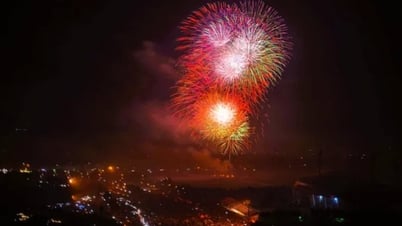








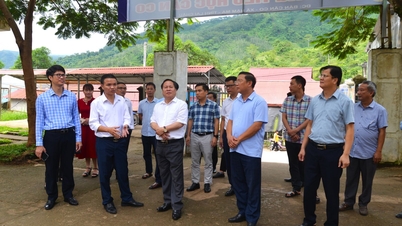

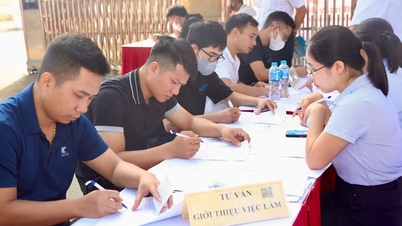




![[Photo] Bustling Mid-Autumn Festival at the Museum of Ethnology](https://vphoto.vietnam.vn/thumb/1200x675/vietnam/resource/IMAGE/2025/10/4/da8d5927734d4ca58e3eced14bc435a3)
























![[VIDEO] Summary of Petrovietnam's 50th Anniversary Ceremony](https://vphoto.vietnam.vn/thumb/402x226/vietnam/resource/IMAGE/2025/10/4/abe133bdb8114793a16d4fe3e5bd0f12)

![[VIDEO] GENERAL SECRETARY TO LAM AWARDS PETROVIETNAM 8 GOLDEN WORDS: "PIONEER - EXCELLENT - SUSTAINABLE - GLOBAL"](https://vphoto.vietnam.vn/thumb/402x226/vietnam/resource/IMAGE/2025/7/23/c2fdb48863e846cfa9fb8e6ea9cf44e7)














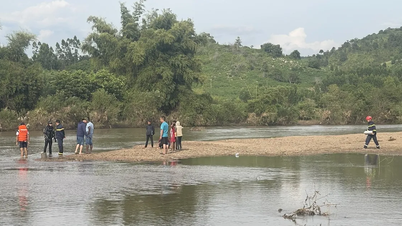


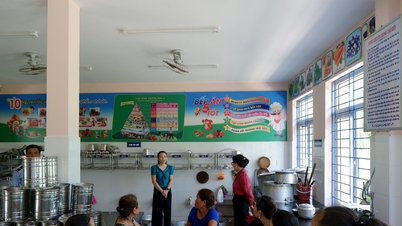
















Comment (0)